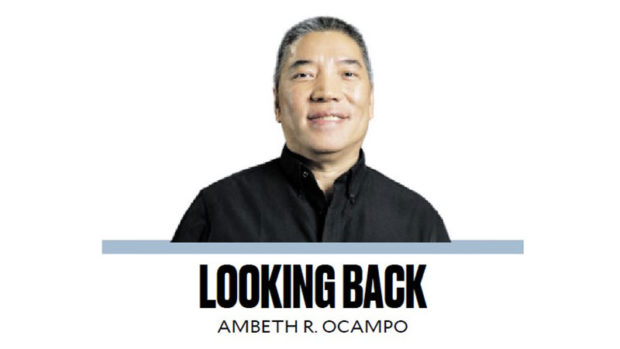As I prepare to return to face-to-face teaching at Ateneo for the first time since the pandemic lockdown, I reflect on my previous semester teaching at the University of Michigan in Ann Arbor. I had the opportunity to teach an undergraduate history course titled “Under Two Empires: The Philippines under Spain and the United States” as well as a graduate seminar on Rizal, focused on primary sources.
While it’s not fair to compare lemons and kalamansi, I couldn’t help but feel envious of my US-based students, particularly the Fil-Ams, who had easy access to primary sources for their term papers. The Ann Arbor campus alone housed five repositories of primary source Philippine materials waiting to be explored: the Bentley Historical Library, the Gerald Ford Presidential Library, the University of Michigan Hatcher Graduate Library Special Collections, the University of Michigan Clements Library, and the bodega of the University of Michigan Museum of Anthropology, which preserves a collection of archaeological and ethnographic artifacts from the Philippines.
During my time at the Bentley and Clements libraries, I witnessed undergraduate students diligently sifting through boxes of old papers, transcribing manuscripts, and grappling with the challenges of analyzing photographs. I couldn’t help but regret not bringing my class to these repositories earlier.
At the Clements Library, I was fortunate to coordinate with an archivist who provided an engaging introduction to the library and its collections. As we explored the formal reading room and viewed curated exhibits of documents, the archivist informed me that my class was one of the few to have ventured inside the Rare Book and Manuscript Library. Most students conducted their research in the university library. During the final exam week, the Clements Library generously opened its reading room to provide a quiet space for students to review.
The Bentley Historical Library is a popular choice among Filipino scholars due to its extensive collection of papers related to the history of Michigan and the “Michigan Men” who were involved in the Philippines, such as Dean C. Worcester, Frank Murphy, Joseph Ralston Hayden, and George Malcolm, among others. It was at the Bentley where I spent countless hours in 2000 and again in 2023, aware that I could never fully explore all the Filipiniana materials stored in its climate-controlled facility. My students also had the opportunity to access these collections.
However, it was at the Clements Library that I made a thrilling discovery in 2023. While browsing the catalog, I stumbled upon love letters from Douglas MacArthur to a woman in Manila. Intrigued, I wrote a column about it earlier this year. What truly excited me was the presence of the 1525 “De Moluccis Insulis” by Maximilianus Transylvanus, technically the first book to mention the Philippines. It was based on interviews with survivors of the Magellan expedition. The National Library of the Philippines has a worn-out copy in its vault, but the Clements Library possessed a pristine copy as if fresh off the printing press. I made sure to showcase this book to my students during a show-and-tell session. While conservation prevented everyone from leafing through it, individuals could make appointments to use it.
One of the photograph collections I requested from the Clements Library documented what Manila was like when the American flag flew over Fort San Antonio Abad after a mock battle that led to the surrender of Spanish Manila on August 13, 1898. My students also had the opportunity to read a handwritten letter from a soldier stationed in the Philippines during the Philippine-American War, describing his experiences. Today, the teaching of Philippine history in college relies heavily on primary sources available online or in books. It’s a real shame that the majority of Filipino students have limited access to original documents and first editions in Manila, preventing them from physically experiencing history in their hands. In contrast, Michigan Fil-Ams are fortunate to have these resources at their fingertips.
Thank you for subscribing! Please check your inbox for further updates.
Denial of responsibility! VigourTimes is an automatic aggregator of Global media. In each content, the hyperlink to the primary source is specified. All trademarks belong to their rightful owners, and all materials to their authors. For any complaint, please reach us at – [email protected]. We will take necessary action within 24 hours.


